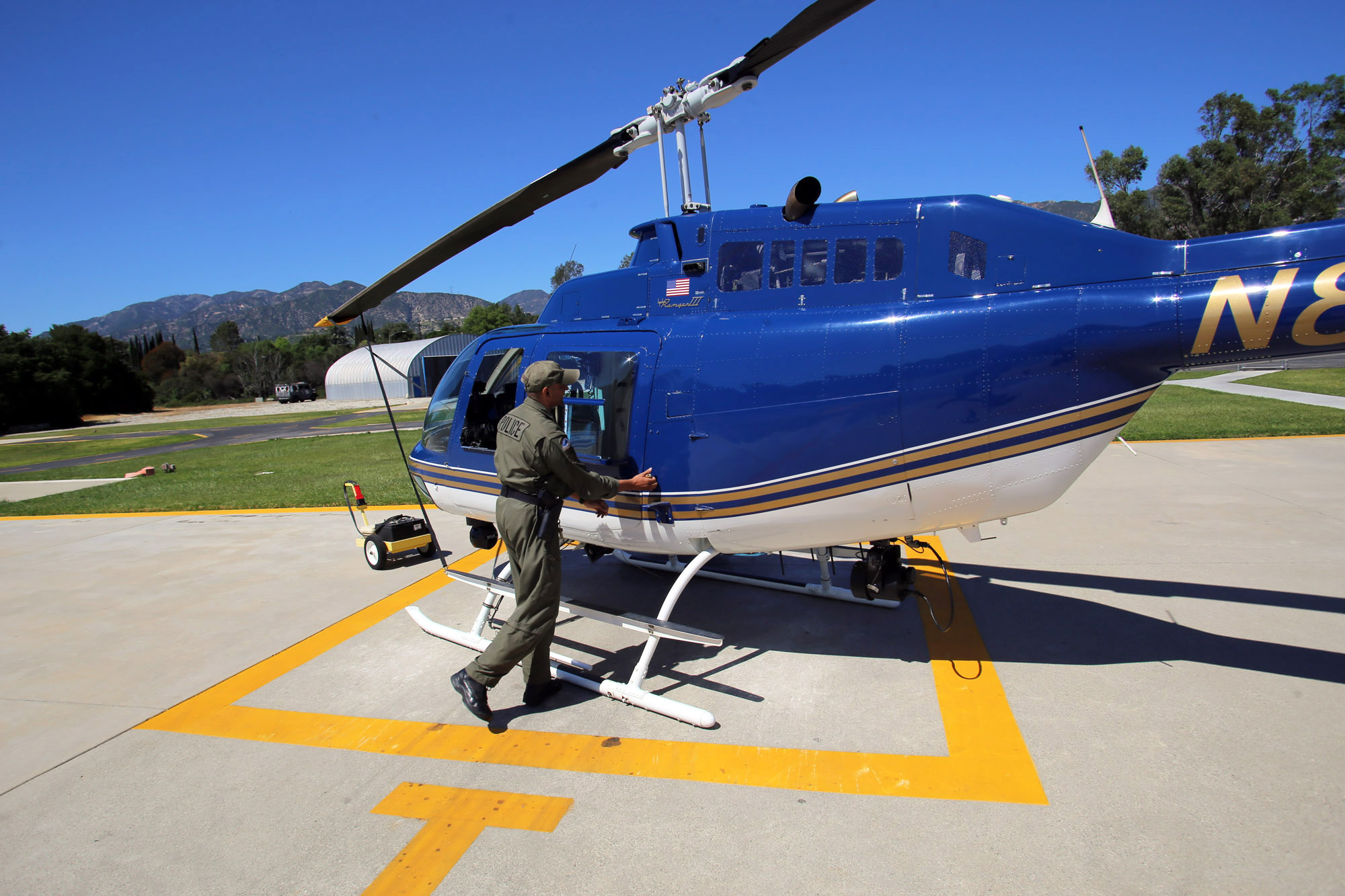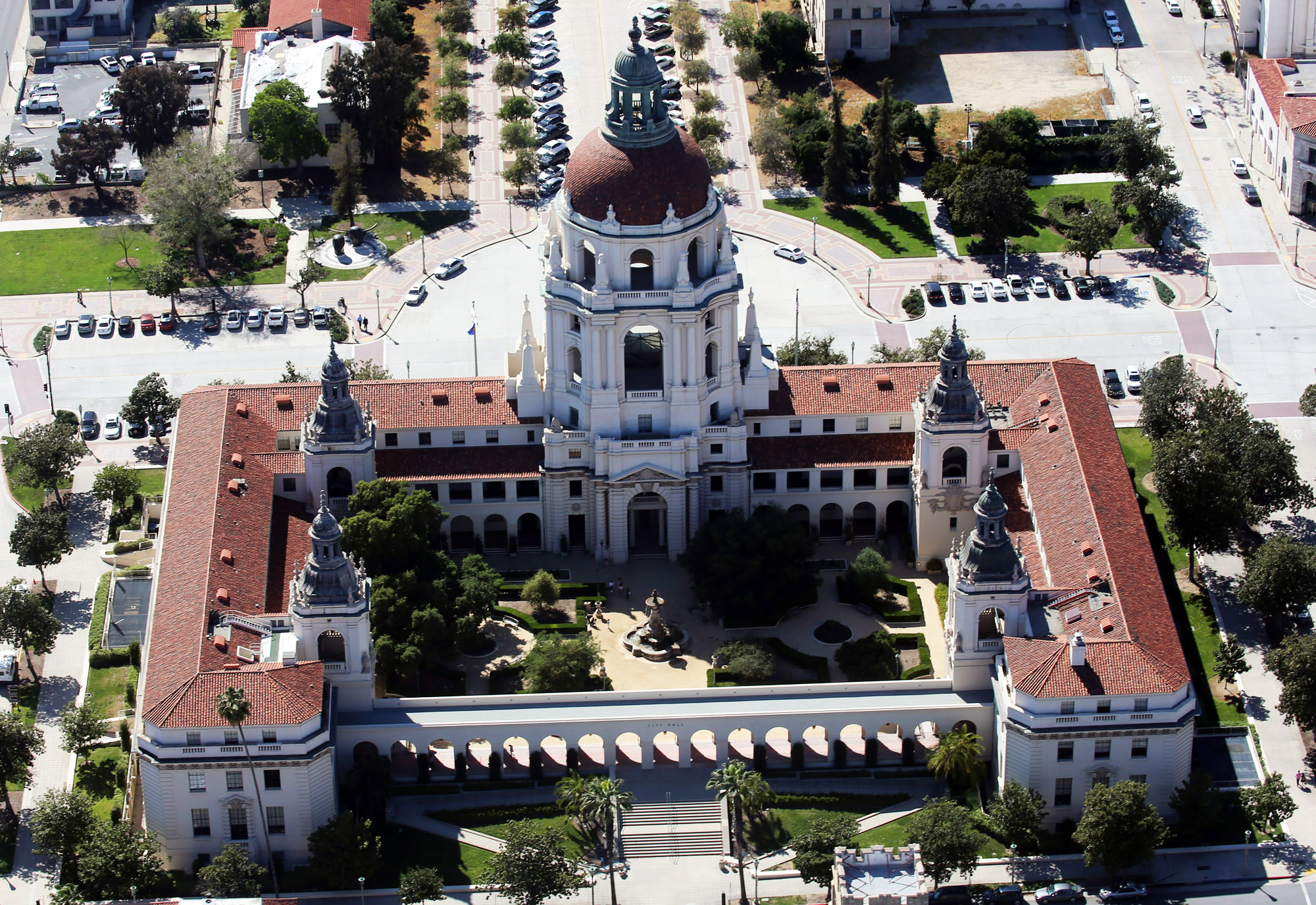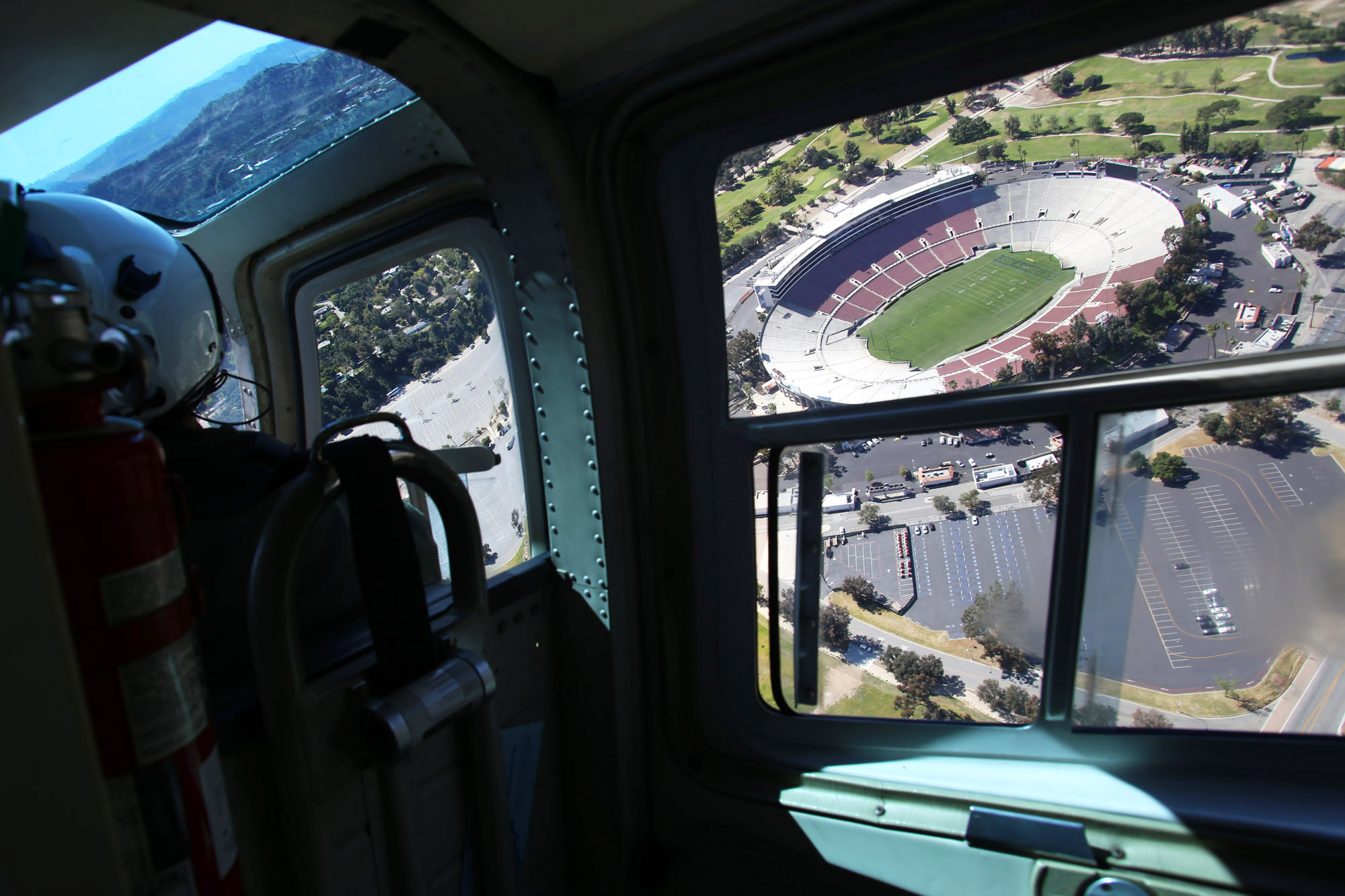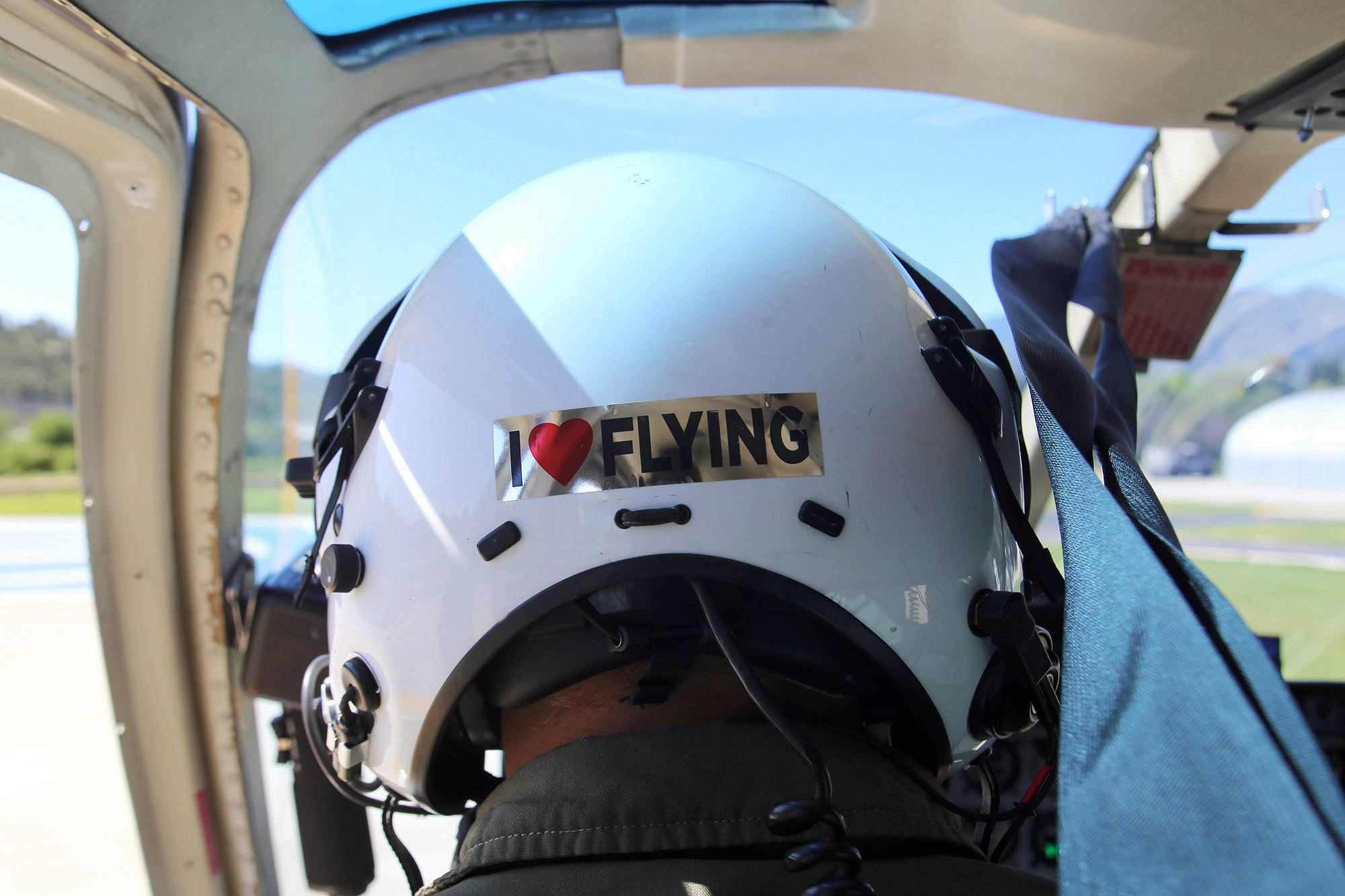A crew of burglars breaks into a home in the hills of Pasadena while a resident is in the house.
She locks herself in the bathroom and calls 911.
As is often the case, a helicopter with Pasadena PD’s Air Operation Unit is the first to arrive.
“We were the first one because it was up in the hills and no one could get there,” said tactical flight officer Brad May, who relayed details to units on the ground as they unfolded. “We got down real low lower than usual because we were trying to protect the residents .”
All four suspects scattered.
All four were ultimately arrested.
“It wound up being a pretty big burglary crew,” May said. “To have burglary crews, people running, shots fired … that doesn’t happen that often on one single call.”
While not necessarily typical for PPD’s Air Operations, such calls are certainly not unusual either.
In operation for almost 50 years, Pasadena PD was among the first agencies to use helicopters to patrol from the sky.

Chris Sharma a Pasadena Tactical Flight Officer conducts a security check on a Bell Jet Ranger B3 Helicopter before an air patrol operation at the Pasadena Police Air Operations Section on April 10, 2019. (Photo by James Carbone)
Air Operations respond to at least 9,000 calls and participate in about 400 arrests per year, said Lt Mike Ingram, who oversees Air Operations and has spent 17 of his 31 years with PPD.
Air Operations responds to about 3,000 calls per year without ground units having to respond and no citizen contact is required.
“This saves our patrol officers hundreds of hours each year that are now spent doing more pressing duties,” Ingram said.
The unit can get anywhere in the city in slightly over a minute and handles burglaries, robberies, pursuits, shootings, missing persons and intoxicated drivers
“All the things where there is potential for people to get hurt,” Ingram said. “You’re basically the quarterback. You are the eyes and ears of everybody (on the scene) and those responding to the scene. They have to know what is needed, assess the situation accurately and then direct resources in.”
The unit has six aircraft at an offsite heliport ready to go and there are usually one to two on patrol during times when call volume is higher, Ingram said.
The choppers are manned with two sworn officers, one who pilots the aircraft while the other serves as a tactical flight officer, responsible for a myriad law enforcement duties.

Pasadena Air Operations fly over the Pasadena City Hall during an air patrol operation on April 10, 2019. (Photo by James Carbone)
The aircraft can reach speeds of 150 MPH, fly at about 700 feet in the air during the day and 1,000 at night.
They ships are equipped with thermal imaging cameras, high intensity search lights, video downlink equipment enabling video to be sent to the ground video to the ground.
But even though they’re in the sky, Air Operations teams are not immune to danger.
In 2008, Air Operations was above the scene involving an hours-long hostage situation in a home.
A gunfight broke out between the suspect and the helicopter unit.
“Ultimately, the guy was arrested,” Ingram said. “None of us were hurt but the helicopter got hit. It went from a fairly static scene to a dynamic scene relatively quickly. That’s aviation. It can go bad in a heartbeat.”
Pasadena PD’s Air Operations Section is also part of the Los Angeles Interagency Metropolitan Police Apprehension Crime Task Force (LA IMPACT), a regional task force which focuses on narcotics enforcement in the Los Angeles area.

Corporal Patrick Pasadena Command Pilot and Chris Sharma a Pasadena Tactical Flight Officer patrol over the 134 FWY and the 2 FWY intersection in Glendale on April 10, 2019. (Photo by James Carbone)
LA IMPACT is responsible for hundreds of arrests per year and recovers large amounts of narcotics and guns from drug trafficking and criminal organizations.
Just as is the case with the entire department, the air operations units puts in months of preparation to be ready for the annual Rose Parade and Rose Bowl football game.
“It’s a tier one type of event,” Ingram said. “It’s a huge target so we have to be on our A-game.”
One helicopter will be on patrol over the Rose Bowl, another will hover over the parade and a third will be on general patrol.
“They are working hand in hand with authorities on the ground,” Ingram said. “They have to be able to multi task. Decision making is critical because they are putting things in play that will make it better or worse. depending on how they approach it.”
“It’s really a team effort between ourselves and ground partners to be flexible to the needs of the day to help create a safe environment throughout the city,” Ingram said. Ultimately, we are fortunate to be in this assignment. But it takes a team of folks on the ground make the community safer.”

Pasadena Air Operations fly over the Pasadena Rose Bowl during an air patrol operation on April 10, 2019. (Photo by James Carbone)
Officers wanting to serve in air operations generally need more overall law enforcement experience than officers transferring to other units, Ingram said. The demands on the crew are very high and it takes a very capable and experienced individual to thrive in that environment, Ingram said.
“Aviation is fascinating, especially when you are flying an aircraft that by all intensive purposes, shouldn’t be flying,” Air Operations Officer Tommy Corrales said. “In an airplane, you can take your hands off the patrols and still fly. In a helicopter, if you take your hands off the controls, you’ll drop like a rock.”
 Behind the Badge
Behind the Badge




